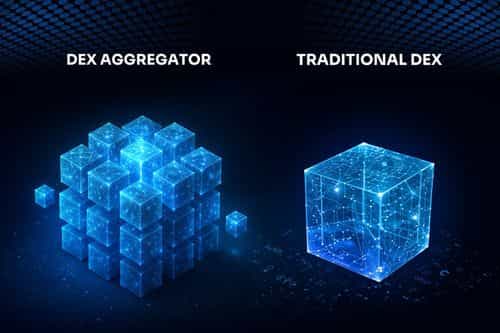DeFi crypto trading: a beginner’s guide to get started


Trading assets between different blockchains is a vital task . Whether you're looking to bridge ETH from Ethereum to Base or another chain, understanding how to do so efficiently and securely can unlock new opportunities. This beginner’s guide will introduce you to ETH cross-chain trading (bridging), with a focus on the Rango Exchange, a decentralized exchange (DEX) aggregator that offers competitive bridging swap rates and low fees.
What is cross-chain bridging?
Cross-chain bridging refers to the process of transferring digital assets, such as ETH, from one blockchain to another. In DeFi, bridging allows users to move tokens seamlessly between different blockchain networks, enabling them to access various opportunities and services across the DeFi ecosystem. Bridging ETH between chains often involves using decentralized bridges and DEXes, which operate without the need for centralized intermediaries. These platforms leverage smart contracts and decentralized networks to facilitate fast, secure, and low-cost transfers.
Why bridge ETH to Base?
Bridging ETH from Ethereum to Base offers several advantages, making it an attractive option for crypto users:
Understanding bridge fees!
When bridging assets, you’ll encounter what are called bridge fees. These fees cover the costs associated with validating and recording the transaction on the blockchain. While these fees are typically low, they can fluctuate depending on factors such as network congestion and the complexity of the bridge. In general, bridging ETH between Ethereum and Base is a cost-effective way to transfer assets, especially when using Rango Exchange, which offers competitive pricing.
How to bridge ETH to Base using Rango Exchange?
Rango Exchange simplifies the bridging process, offering an easy-to-use interface for swapping tokens across chains with the best rates and lowest fees. With Rango, you can connect your crypto wallet and bridge ETH seamlessly from Ethereum to Base (or any other supported chain pair).
What do you need to get started?
Bridging ETH used to be a time-consuming operation, but with Rango you can easily bridge ETH. Just make sure you have the following:
Step-by-Step guide to bridge ETH
Bridging ETH from one chain like Ethereum to a chain like Base could be frightening, but Rango has made it simple; you can easily compare different providers, their rates and transaction times to choose the best possible route at the time of your bridge. Check out the guide below to smoothly proceed with your trade.
Step 1: Connect your wallet
The very first step is connecting your desired wallet to the dapp, Rango:
Step 2: Select the bridge details
For any bridge transaction, the source and destination chain and token should be defined:
Step 3: Specify the bridge amount
Last but not least, the bridge amount should be entered. You can review different routes based on the pair and the amount you request to trade on Rango:
Step 4: Review and confirm
It is a common-sense law that everything crypto should be checked at least twice; there could be no-turn-back scenarios:
Step 5: Approve the transaction in your wallet
Final approval for any DeFi operation occurs in-wallet, and money is in users' final control:
Step 6: Monitor and complete the transfer
Generally speaking, transactions may sometimes take time more time than usual, especially in cross-chain ones, so:
Tips for a smooth Ethereum bridging experience
Learn the tips below to make your Ethereum bridging as smooth as possible:
Conclusion
Bridging ETH from Ethereum to Base using Rango Exchange offers a fast, cost-effective, and secure way to transfer assets between blockchains. With lower transaction fees and access to unique DeFi opportunities on Base, users can enhance their DeFi experience with no cross-chain obstacles.
Bridging is one of the core activities in decentralized finance. Learn other DeFi key components!
Frequently asked questions
Check out most commonly asked questions, addressed based on community needs. Can't find what you are looking for?
Contact us, our friendly support helps!
Why should I bridge ETH to Base instead of using Ethereum directly?
Bridging ETH to Base offers lower transaction fees compared to Ethereum, making it a more economical option. Additionally, Base may provide unique DeFi platforms and opportunities not available on Ethereum, enhancing your DeFi experience.
What are gas fees?
Gas fees are transaction (on-chain swap or cross-chain bridge) fees paid to networks for validating and processing transactions on chain like Ethereum. Ethereum gas fee token is ETH.




